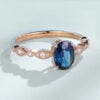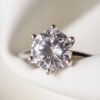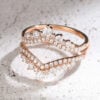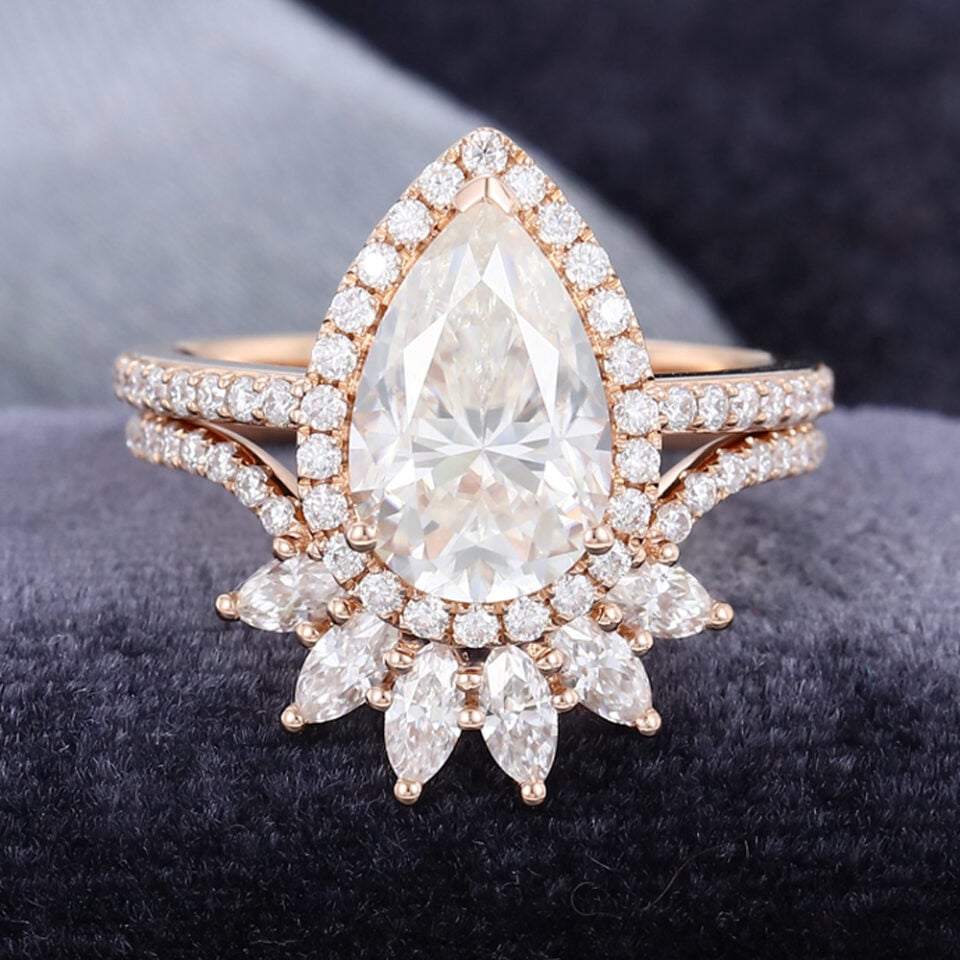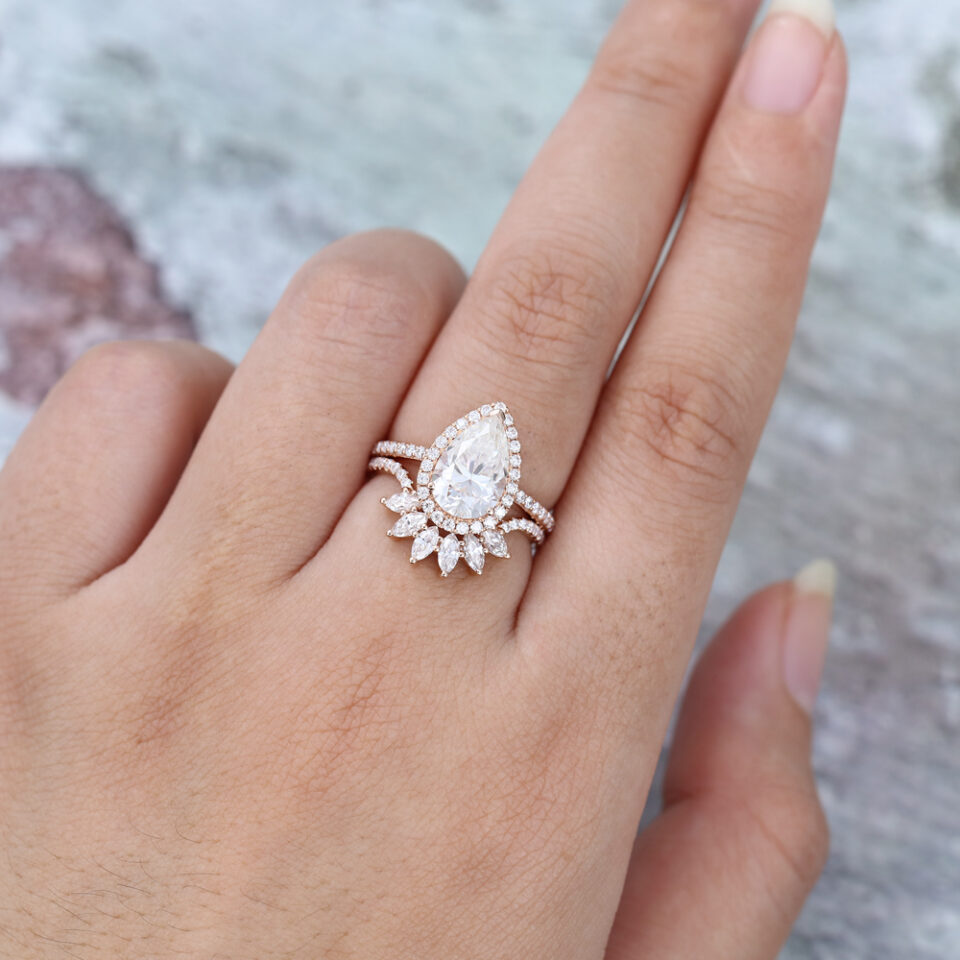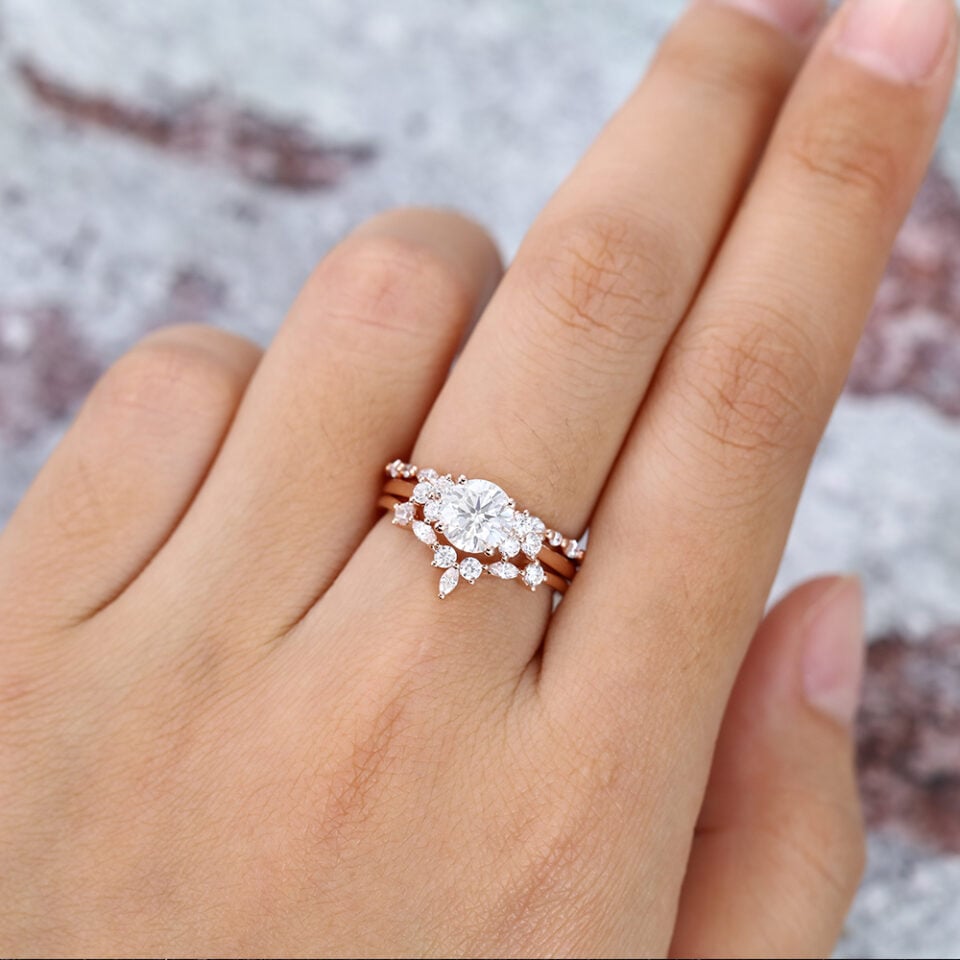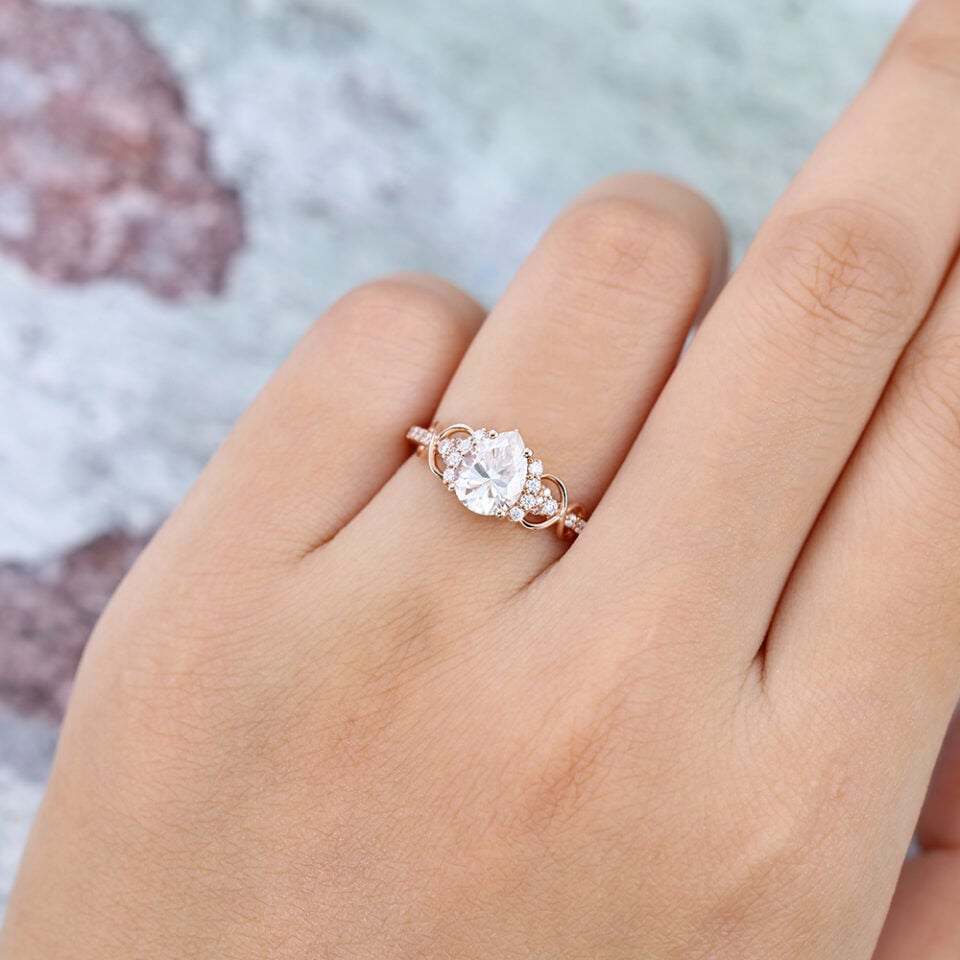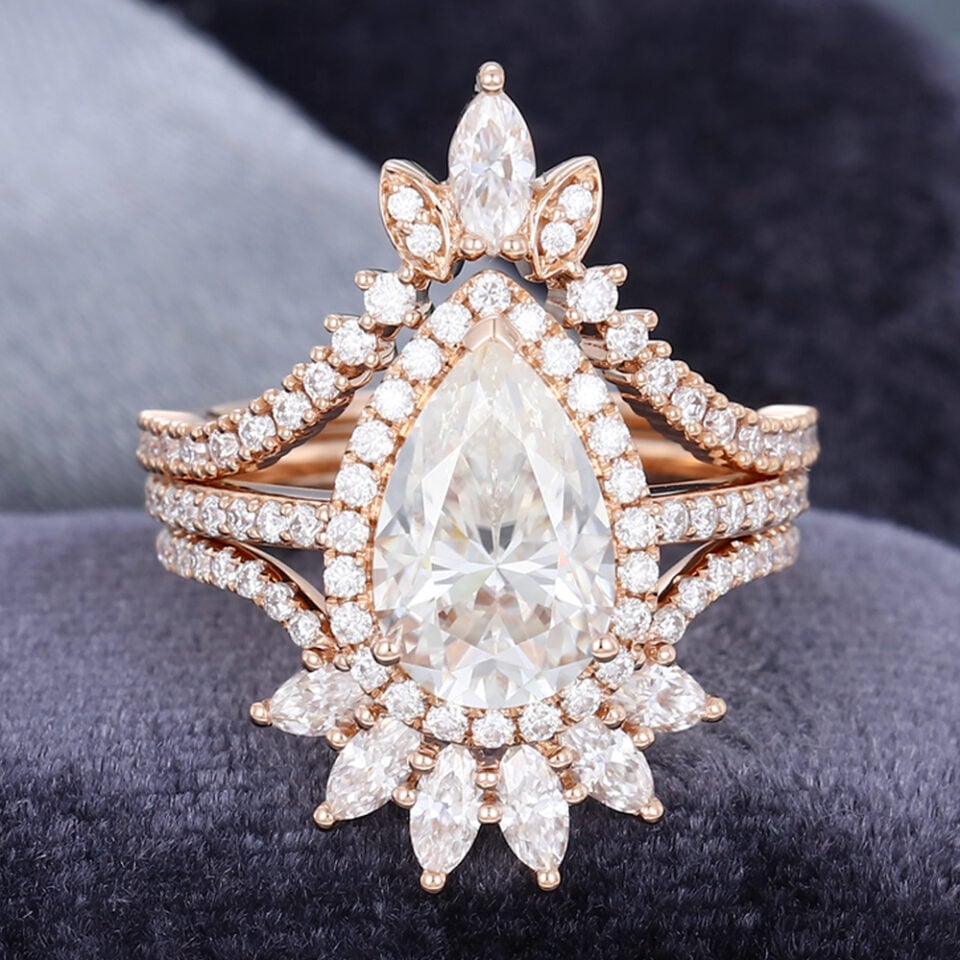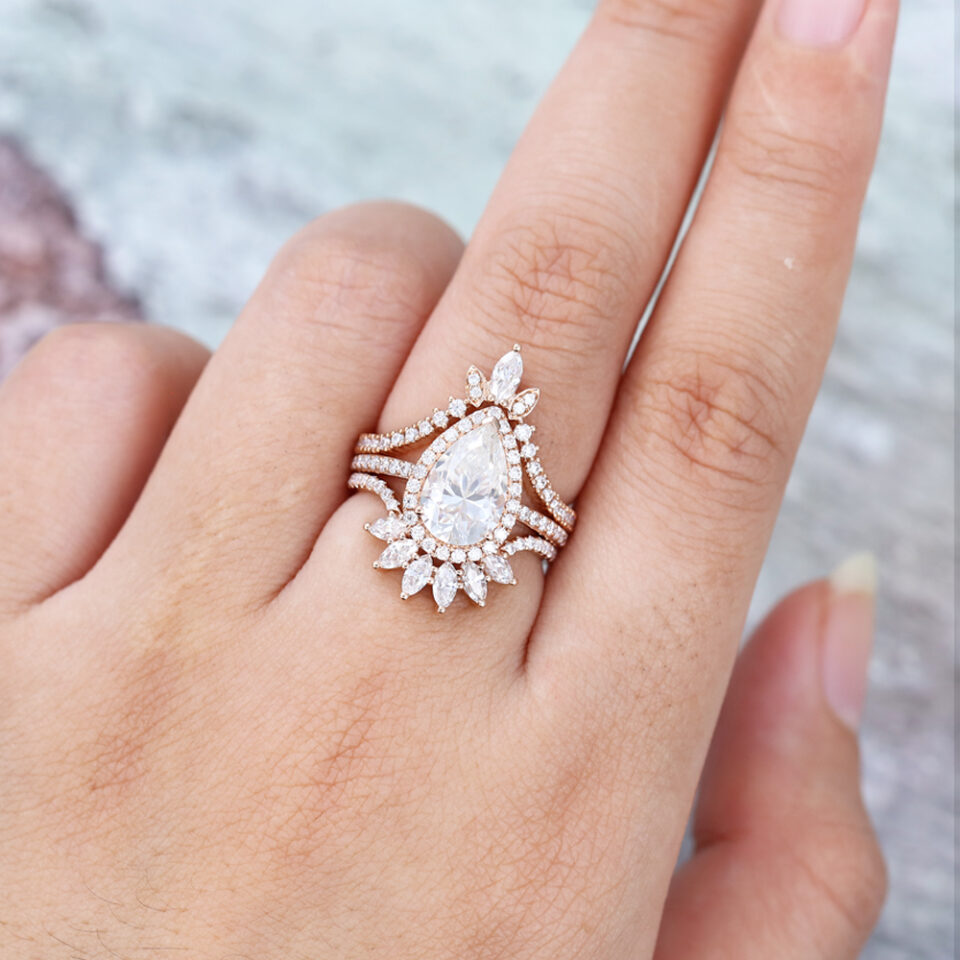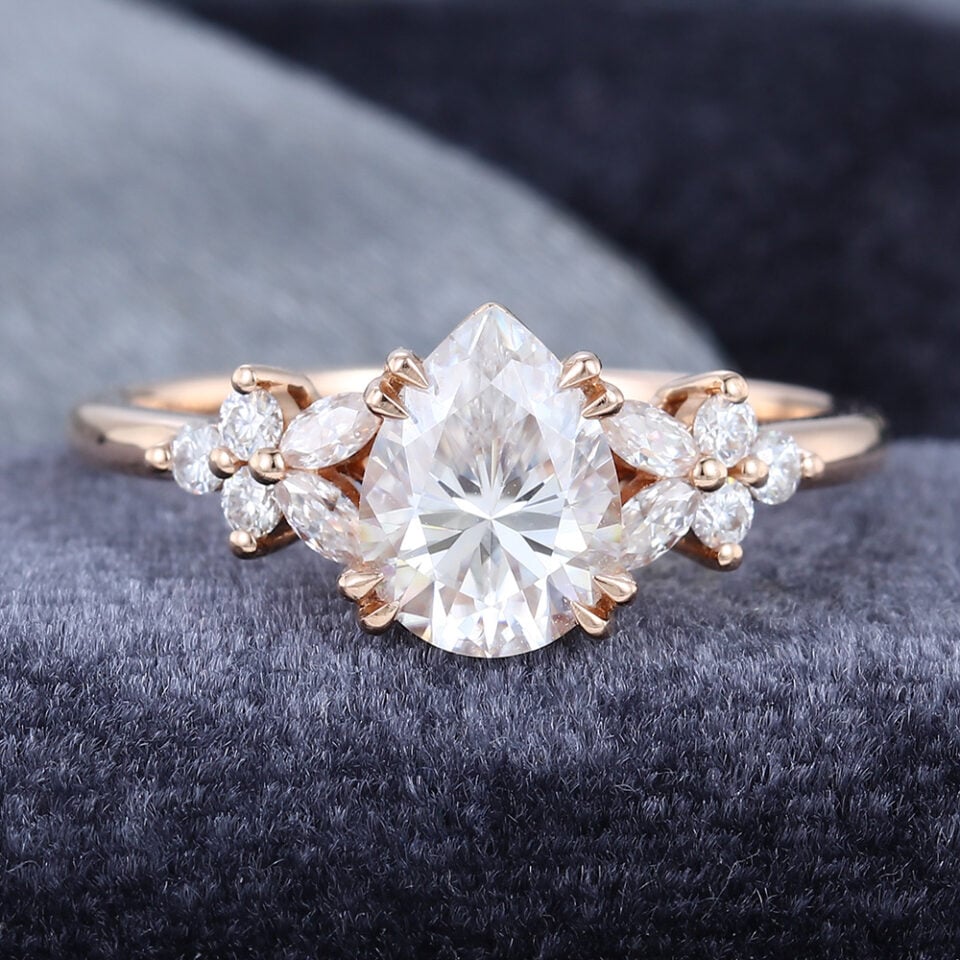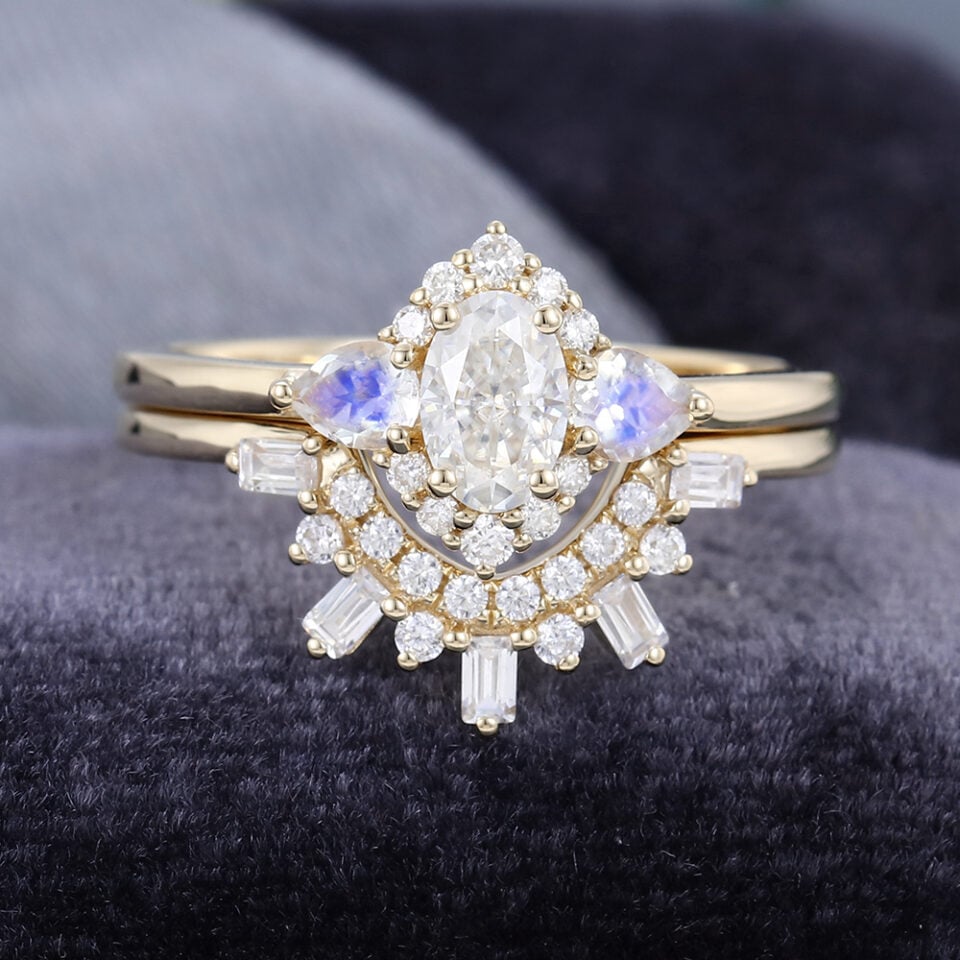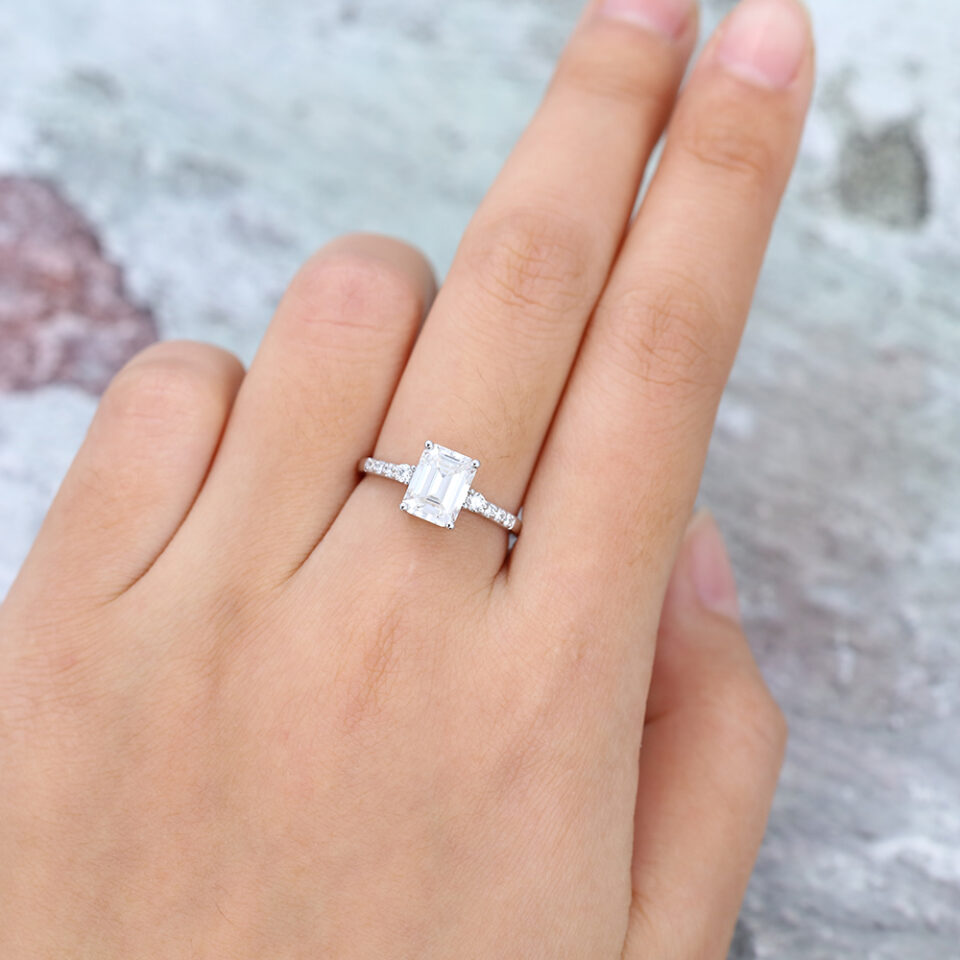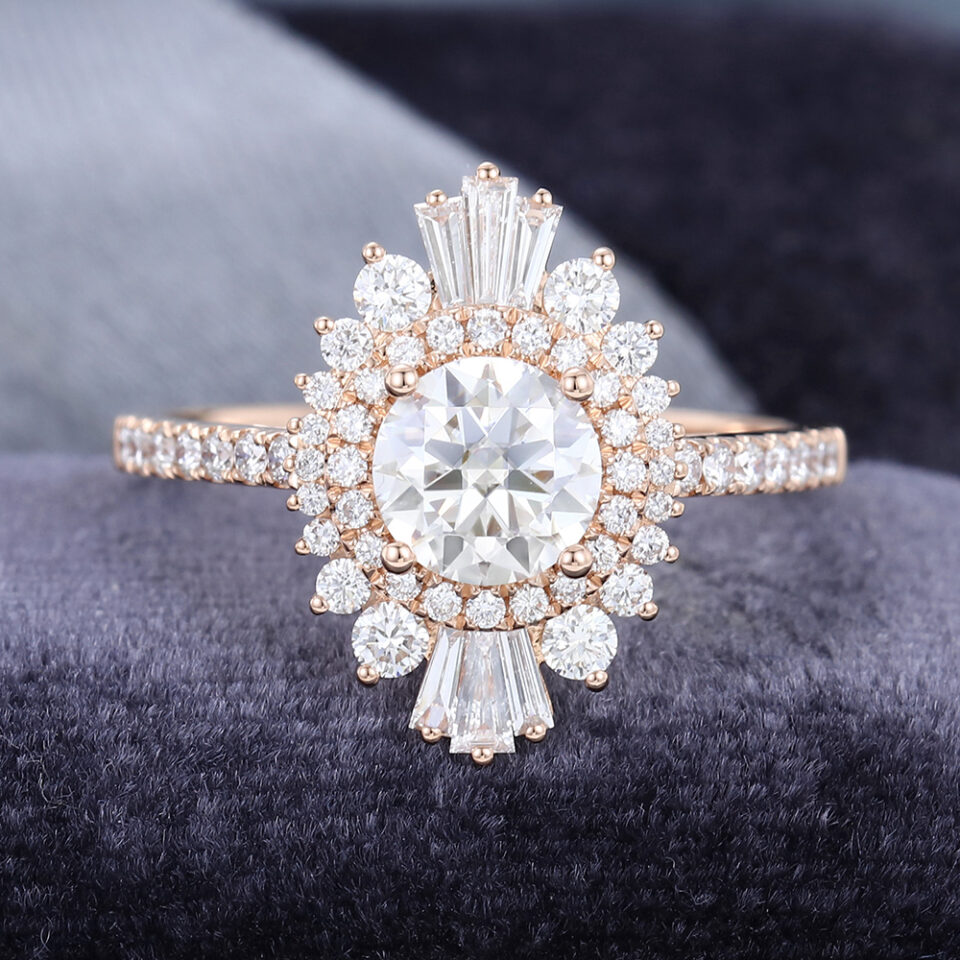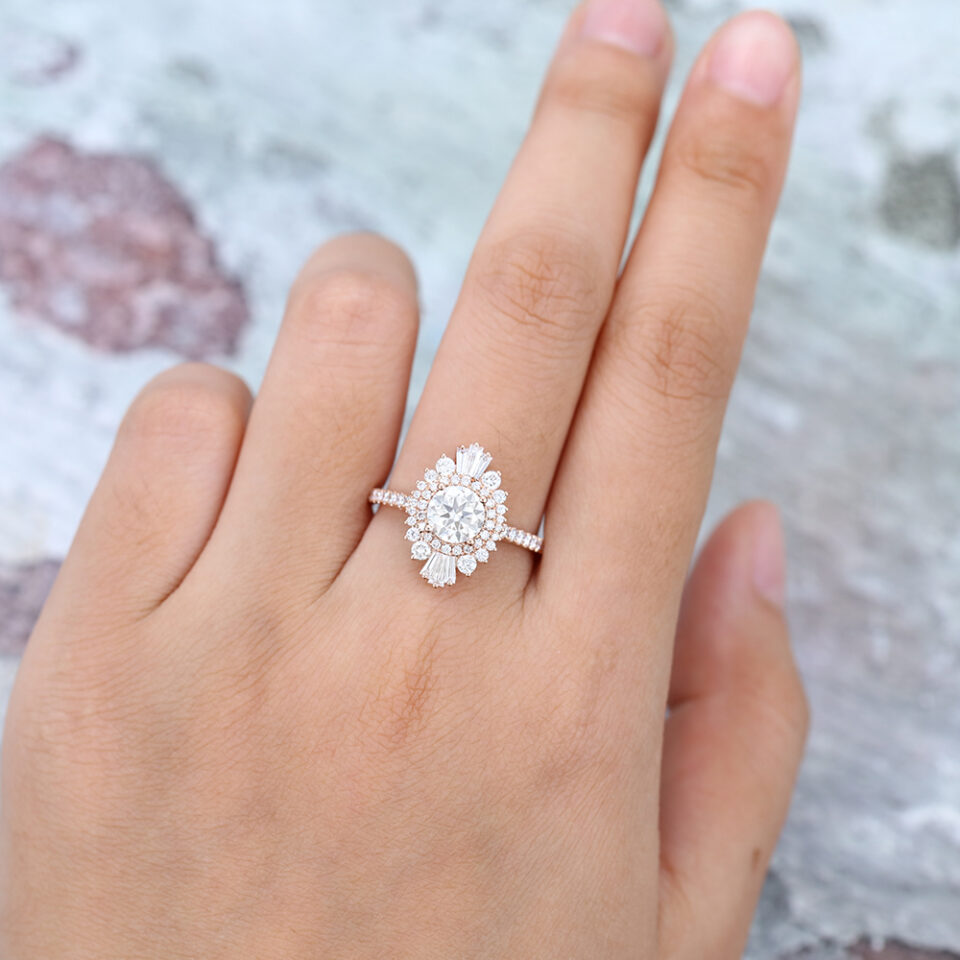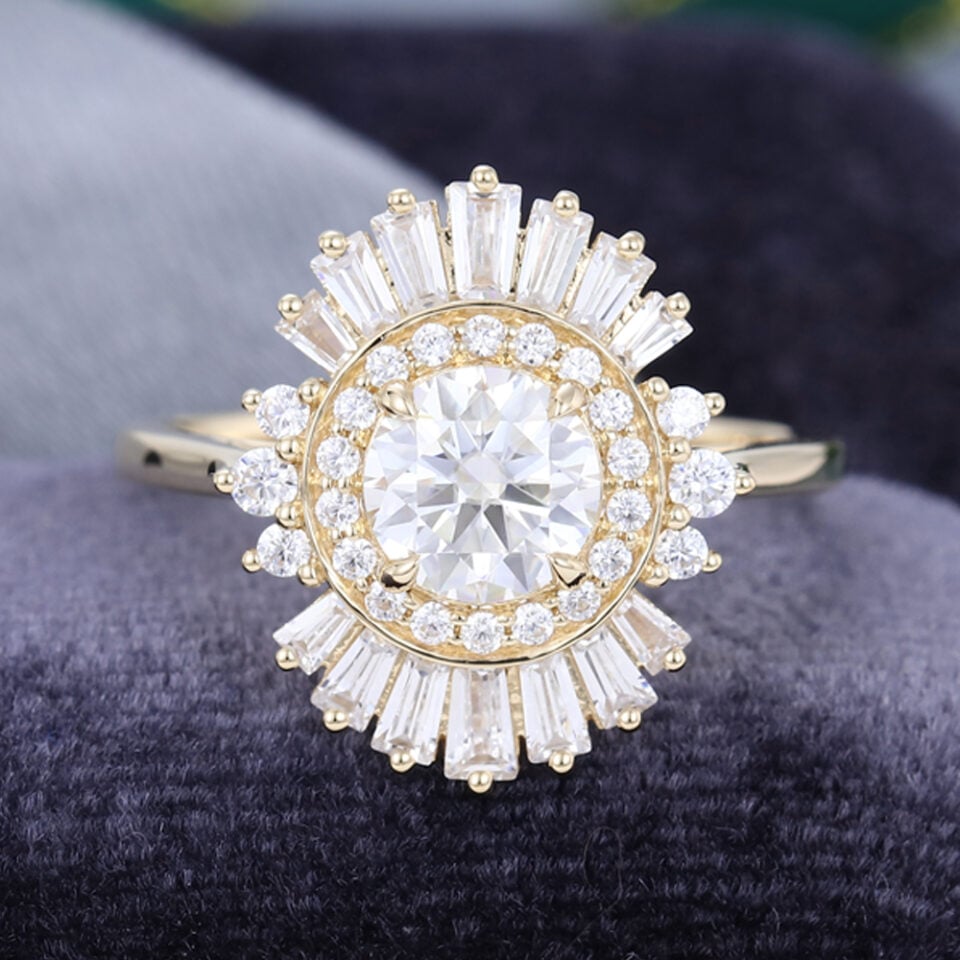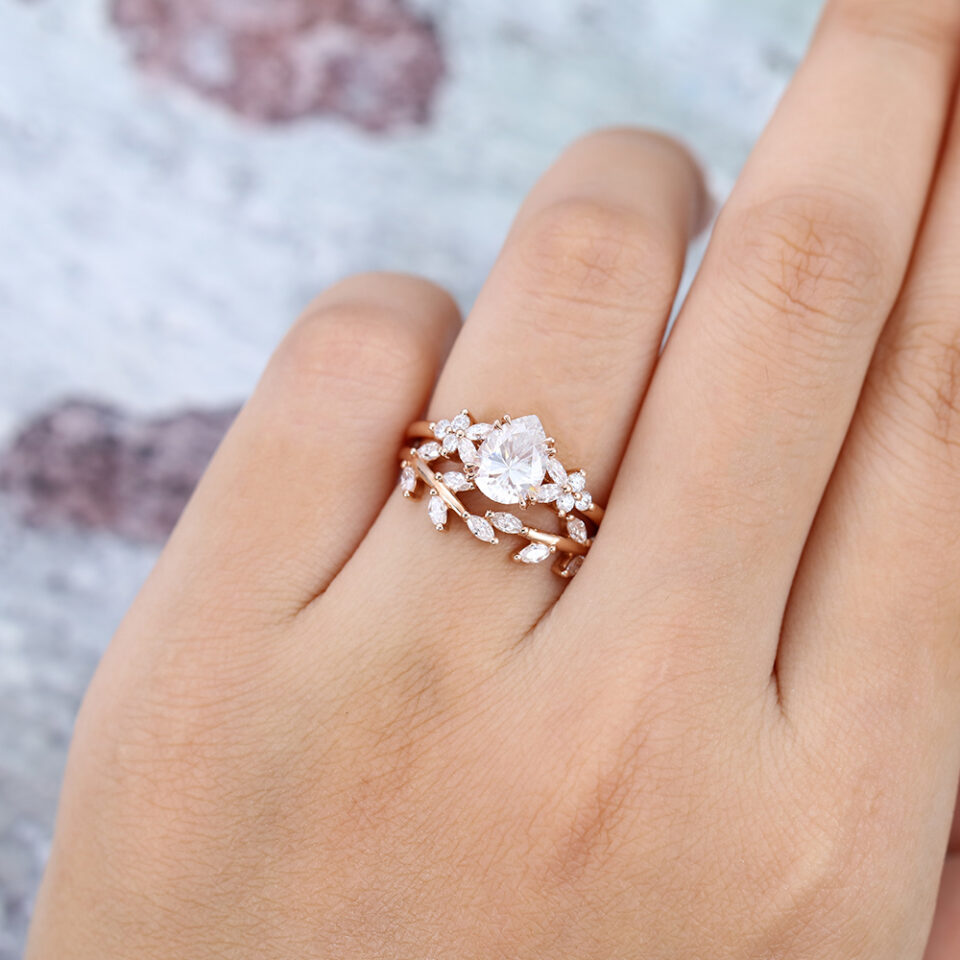Welcome to CoolringJewelry,where brilliance meets sustainability in our stunning Moissanite Diamond Ring collection.Enjoy all the beauty and sparkle of traditional diamonds with the added advantage of ethical sourcing and affordability.Moissanite offers exceptional fire and brilliance,rivaling natural diamonds,making it an eco-conscious and budget-friendly choice for your special moments.Explore our range of exquisite designs and embrace the radiance of Moissanite at CoolringJewelry,where luxury meets conscience.
Moissanite Rings
Showing 1–20 of 96 results
Moissanite is a precious gemstone popular among jewelry enthusiasts for its unique characteristics.Found in deposits in Mozambique,these stones’characteristics include exceptional fire and scintillation.They typically have a high-quality cut The craftsmanship allows it to sparkle beautifully in the light.Compared to traditional diamonds,moissanite’s more affordable price makes it an affordable choice for those looking for a high-quality gemstone.Whether it’s for an engagement ring,wedding band,or anniversary As an anniversary gift,moissanite can bring unique charm and value to jewelry.
Moissanite Ring FAQ
Moissanite is a lab-created gemstone that closely resembles a diamond. It’s known for its exceptional brilliance and durability, ranking just below diamonds on the Mohs scale of hardness. Moissanite has gained popularity as a more affordable and ethical alternative to traditional diamond jewelry. It offers a brilliant sparkle and comes in various grades, with most being near colorless. Many people choose moissanite for engagement rings and other jewelry due to its aesthetic qualities and lower cost, making it an attractive option for those seeking the look of a diamond without the high price tag.
No, moissanite is not a diamond. While moissanite shares some visual similarities with diamonds, it is a distinct and separate gemstone. Moissanite is a naturally occurring mineral, but it’s rarely found in nature in sizes suitable for use in jewelry.
In the context of jewelry, “moissanite” typically refers to synthetic moissanite, which is created in laboratories. This synthetic moissanite closely resembles a diamond in terms of its brilliance and hardness but has different chemical and physical properties. It is a silicon carbide crystal, whereas diamonds are made of carbon.
Moissanite is often chosen as a diamond alternative due to its brilliance, durability, and lower cost. It offers a similar look to diamonds but is a separate and unique gemstone.
Moissanite is composed of silicon carbide, a naturally occurring mineral. In its natural form, moissanite is extremely rare, so moissanite used in jewelry is almost always lab-created. The synthetic moissanite is produced through a controlled and precise process where silicon and carbon elements are combined at high temperatures and pressures in a laboratory environment. This results in the formation of silicon carbide crystals, which are then cut and faceted into gemstones for use in various types of jewelry. Moissanite’s chemical composition of silicon and carbon gives it its exceptional hardness and brilliance, making it a popular diamond alternative in the jewelry industry.
Moissanite is a real gemstone,but it is not a naturally occurring one like diamonds,rubies,or sapphires.Instead,moissanite is created through a laboratory process,making it a synthetic gemstone.However,it is important to note that”synthetic”or”lab-grown”does not imply that moissanite is fake or of lesser quality.Moissanite has its own unique characteristics,including exceptional brilliance and durability,which make it a desirable and legitimate gemstone in its own right.So,while moissanite is not a natural gemstone,it is certainly real and highly valued for its beauty and other qualities.
Cleaning a moissanite ring is a straightforward process to maintain its brilliance. Here’s how to do it:
- Soapy Water: Create a solution of warm water and a few drops of mild dish soap. Soak the moissanite ring in the mixture for a few minutes.
- Soft Brush: Gently scrub the ring with a soft-bristle toothbrush or a jewelry brush, paying attention to any crevices and underneath the stone.
- Rinse Thoroughly: Rinse the ring with clean, warm water to remove any soap residue.
- Drying: Pat the ring dry with a soft, lint-free cloth, avoiding any abrasive materials.
- Avoid Chemicals: Do not use harsh chemicals, abrasive cleaners, or ultrasonic cleaners, as they may damage the moissanite.
- Regular Maintenance: Clean your moissanite ring regularly to keep it looking its best.
Remember that moissanite is a durable gemstone, but it can still get scratched or dulled over time, so handle it with care and keep it clean to maintain its brilliance.
Moissanite is known for its exceptional clarity and purity.Unlike many natural gemstones,moissanite typically has very few,if any,visible inclusions or imperfections when viewed with the naked eye.This high level of clarity is one of its attractive features,as it can appear nearly flawless to the casual observer.
However,it’s essential to note that no gemstone,including moissanite,is entirely free of inclusions or imperfections when examined under magnification or specific conditions.In rare cases,very tiny inclusions or blemishes may be present,but they are typically minimal and do not significantly impact the gemstone’s overall beauty or sparkle.
In summary,while moissanite is renowned for its excellent clarity and is generally free of visible inclusions,it may still have extremely tiny imperfections that are not readily visible to the naked eye.
Moissanite,often dubbed the”gemstone born from the stars,”has gained immense popularity in the world of fine jewelry.In this article,we’ll explore the key features and benefits of moissanite.
Exceptional Brilliance:Moissanite’s brilliance is extraordinary.With a refractive index higher than that of diamonds,it disperses light more effectively,resulting in breathtaking flashes of color and sparkle.This exceptional fire makes moissanite an eye-catching gemstone that rivals even the finest diamonds.
Durability:Moissanite is one of the hardest known minerals,ranking 9.25 on the Mohs scale of mineral hardness—just slightly behind diamonds,which rank 10.This remarkable hardness ensures that moissanite is highly resistant to scratches,chips,and abrasions,making it suitable for everyday wear and long-lasting jewelry.
Affordability:One of the most significant advantages of moissanite is its affordability compared to diamonds.Moissanite typically costs a fraction of the price of a comparable diamond of the same carat weight.This cost-effectiveness allows individuals to choose larger and more impressive moissanite stones without breaking the bank.
Ethical and Sustainable:Unlike diamonds,which may sometimes be associated with ethical concerns,moissanite is created in a laboratory environment,ensuring its ethical and sustainable sourcing.This gemstone is a responsible choice for those who prioritize eco-friendliness and ethical considerations.
Color Variations:While moissanite is often sought after for its colorless or near-colorless varieties,it’s available in a range of colors,including fancy colors like green,blue,and yellow.This versatility allows for creative and personalized jewelry designs.
Low Maintenance:Moissanite is relatively low-maintenance compared to other gemstones.Its hardness and durability mean it requires less frequent cleaning and is less prone to damage during daily wear.
In conclusion,moissanite’s exceptional brilliance,durability,affordability,ethical sourcing,and unique optical properties make it a compelling choice for those seeking a stunning and sustainable alternative to diamonds.Whether used in engagement rings,earrings,or other jewelry pieces,moissanite’s beauty and advantages make it a gemstone worth considering for anyone who values both aesthetics and ethics.
Moissanite and real diamonds share a striking resemblance,making it challenging for many to differentiate between the two.However, CoolringJewelry has several ways to help you confidently differentiate between moissanite and real diamonds.
Hardness Test:Diamonds are renowned for their hardness,ranking 10 on the Mohs scale.Moissanite is also durable but slightly softer,with a Mohs rating of 9.25.You can perform a scratch test by using a material known to be less hard than a diamond,like glass or quartz,to gently scratch the gemstone.If it scratches,it’s likely moissanite;if it remains unscathed,it’s more likely a real diamond.
Brilliance and Sparkle:Both moissanite and diamonds exhibit exceptional brilliance and sparkle.However,their patterns of light dispersion differ slightly.Moissanite often displays rainbow flashes of light,referred to as”fire,”more prominently than diamonds.Diamonds tend to have a more subdued and less colorful fire,with a prismatic effect that is more dispersed.To observe these differences,place the gemstone under bright lighting and move it around to observe the patterns of light it emits.If you see intense and colorful flashes,it’s likely moissanite;if it’s more subtle,it’s probably a real diamond.
Color Evaluation:While both diamonds and moissanite come in various colors,colorless or near-colorless stones are most desirable.Moissanite tends to have a slightly warmer tone than diamonds,often showing faint yellow or greenish undertones.Place the gemstone against a white background in natural light and observe any tint or hue it may exhibit.If it shows noticeable color,it’s likely moissanite;if it appears icy and colorless,it’s probably a real diamond.
Thermal Conductivity:Diamonds have exceptional thermal conductivity,meaning they disperse heat rapidly.Moissanite,in contrast,doesn’t conduct heat as efficiently.To differentiate between the two,touch the gemstone to warm it up and quickly place it on a piece of glass or metal.If it fogs up upon touching the surface,it’s likely moissanite;if it remains clear,it’s more likely a real diamond.
Professional Evaluation:If you’re still uncertain after conducting these tests,seek the expertise of a professional jeweler or gemologist.They possess specialized equipment like loupes or gemological testers that can accurately determine whether a stone is moissanite or a diamond.
In conclusion,distinguishing between moissanite and real diamonds may require a keen eye and some basic testing.By using a combination of these methods,you can confidently identify these gemstones.Whether you prefer the allure of a diamond or the affordability of moissanite,understanding their differences ensures that you make an informed choice when selecting the perfect gemstone for your jewelry.


